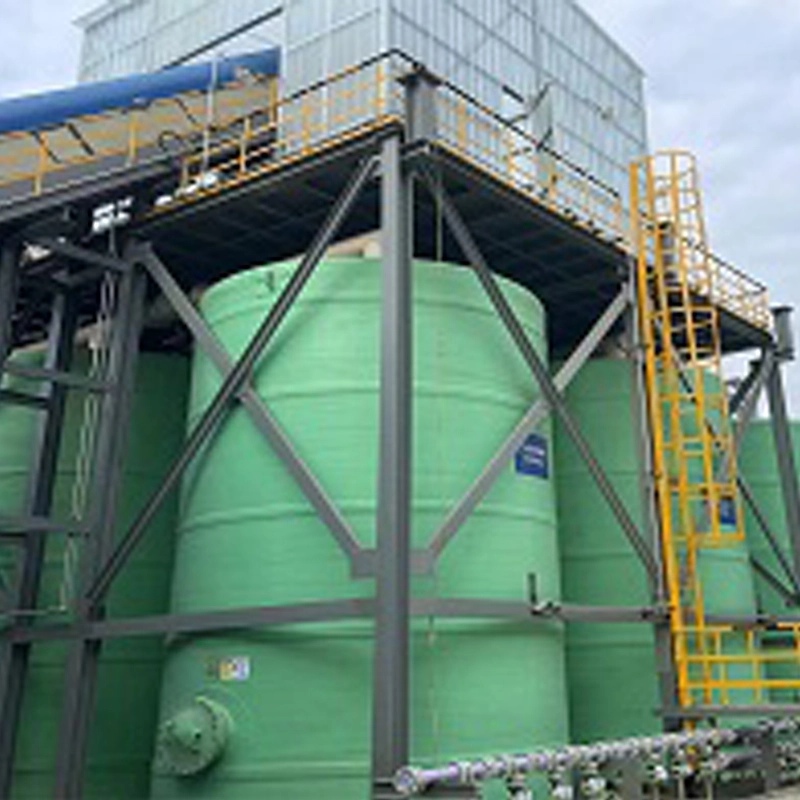
Winter brings stunning snowscapes but also icy hazards that challenge pedestrians and drivers alike. Slippery roads and sidewalks can lead to accidents or frustrating delays. Fortunately, a reliable solution exists in the form of calcium chloride—an effective ally in the fight against snow and ice. This versatile compound not only melts ice efficiently but also prevents new ice from forming, making it a go-to choice for keeping surfaces safe. Let’s dive into what makes calcium chloride stand out, how it works, and why it might be the best option for your winter needs.
What Is Calcium Chloride and How Does It Work?
Calcium chloride is an inorganic salt derived from hydrochloric acid and calcium, appearing as a white, odorless substance. Its standout feature is its strong hygroscopic nature, meaning it eagerly absorbs moisture from the air. When this happens, it releases heat, which helps melt snow and ice on contact. This heat generation is a game-changer, especially in harsh winter conditions.
The science is straightforward yet impressive. When calcium chloride mixes with water, it lowers the freezing point significantly—down to -30°C (-22°F)—far beyond what traditional salts can handle. Ice forms when water molecules bond into a crystalline structure, but calcium chloride disrupts this process by preventing new bonds from forming. This dual action of melting existing ice and stopping new ice makes it a powerful tool for winter safety.
You can apply it in two ways: dry, using flakes spread by machines, or wet, as a solution sprayed onto surfaces. Both methods work well, depending on the situation, whether it’s a residential driveway or a busy highway.
Benefits of Calcium Chloride Over Other De-Icing Agents
When comparing calcium chloride to other de-icing options, its advantages become clear. Traditional sodium chloride, or rock salt, has been a staple for years but comes with limitations. It’s effective only down to -6°C (21°F) and can damage roads, bridges, and even car undercarriages due to corrosion. Plus, it harms plants and soil near treated areas, prompting some regions to use eco-friendlier alternatives like phosphate additives.
Calcium chloride, on the other hand, shines in colder temperatures and offers a longer-lasting effect. It doesn’t corrode metal or concrete, making it gentler on infrastructure and vehicles. For delicate surfaces like paving stones, which can crack or discolor from scraping or salt exposure, calcium chloride is a safer bet. It’s also kinder to the environment, avoiding the ecological downsides of sodium chloride.
Other options, like magnesium chloride or levulinic acid salts, have their merits—magnesium chloride works down to -20°C (-4°F) and sticks well to surfaces, while levulinic acid salts are non-corrosive but pricey. However, calcium chloride strikes a balance with its wide temperature range, rapid action, and cost-effectiveness, especially when mixed with sand or other agents for enhanced grip.
Applications Beyond Winter Safety

Calcium chloride’s usefulness extends far beyond snowy roads. In warmer months, it serves as an anti-dusting agent on unpaved roads, binding dust particles and reducing airborne particles—a boon for rural communities. Its moisture-absorbing properties also make it ideal for drying gases and liquids in chemical processes.
The food industry benefits too, using it as a stabilizer or acidity regulator in products like cheese and canned goods. In agriculture, it acts as a foliar fertilizer, boosting calcium levels in crops to improve fruit and vegetable quality. Even in healthcare, it supports physiotherapy and dietary supplements by aiding calcium absorption. This versatility underscores its value across multiple sectors.
Environmental and Safety Considerations
One concern with de-icing agents is their environmental impact. Sodium chloride’s runoff can harm aquatic life and soil health, while calcium chloride stands out as a safer choice. Recognized by the World Health Organization as non-toxic, it poses minimal risk to humans, pets, or wildlife when used correctly. Its lack of corrosion also means less damage to shoes, vehicles, and infrastructure—key factors for homeowners and municipalities alike.
That said, proper application matters. Overuse can lead to soil salinity or groundwater changes, though this is less severe than with sodium chloride. Using it in moderation, often mixed with sand (e.g., 80% sand and 20% calcium chloride), maximizes safety while minimizing environmental strain.
Practical Tips for Using Calcium Chloride
Getting the most out of calcium chloride requires some know-how. Here are practical steps to ensure it works effectively:
- Timing is Key: Apply it before a storm to prevent ice buildup or right after to melt fresh snow. Pre-treating surfaces can save effort later.
- Even Spread: Use a spreader for uniform coverage, avoiding clumps that might miss spots.
- Mixing Options: Combine with sand for better traction, especially on slopes or high-traffic areas.
- Storage: Keep it dry to maintain its potency, as moisture can cause clumping.
For large areas like parking lots, the wet method with sprayers offers quick, even distribution. Homeowners might prefer the dry method for smaller spaces, applying flakes by hand or with a simple spreader. Either way, a little planning goes a long way.
Comparing De-Icing Agents: A Closer Look
To help you decide, here’s a breakdown of common de-icing agents:
| Agent | Effective Temperature | Pros | Cons |
| Calcium Chloride | -30°C (-22°F) | Long-lasting, non-corrosive, eco-friendly | Higher cost |
| Sodium Chloride | -6°C (21°F) | Cheap, widely available | Corrosive, harms environment |
| Magnesium Chloride | -20°C (-4°F) | Good adhesion, safer for paving | Moderately priced |
| Levulinic Acid Salts | -12°C (10°F) | Non-corrosive, eco-friendly | Expensive, less common |
Mixtures, like 80% sodium chloride with 20% calcium chloride, blend cost savings with improved performance. For extreme cold or sensitive surfaces, though, calcium chloride alone often proves the best pick.
Real-World Impact and Industry Insights
Across the globe, calcium chloride has earned trust for its reliability. In regions with brutal winters, it keeps roads open and safe, reducing accident rates. Industries value its role in chemical drying and food processing, while farmers rely on it to enhance crop yields. This widespread adoption reflects its proven track record.
For businesses, using calcium chloride can boost your brand as a safety-conscious operation. Municipalities that prioritize it often gain a reputation for caring about community well-being. Individuals, too, can enhance their personal brand by choosing smart, sustainable solutions for their properties.
Introducing Hebei Aoliande Chemical Equipment Co., Ltd.
Before diving into common questions, it’s worth noting that Hebei Aoliande Chemical Equipment Co., Ltd. stands out as a trusted supplier of calcium chloride production lines. Based in Hengshui City, China, this company combines advanced technology with skilled craftsmanship to deliver reliable equipment. With a global reach and a commitment to quality—backed by ISO certifications—they support industries worldwide in producing this vital compound.
Conclusion
Calcium chloride proves itself as a powerful ally in the fight against snow and ice, offering unmatched performance in cold weather, minimal environmental impact, and versatility across industries. Whether you’re a homeowner clearing a driveway or a city planner managing roads, its benefits—rapid melting, long-lasting protection, and safety—make it a smart choice. By understanding its applications and using it wisely, you can tackle winter challenges with confidence.
FAQs
How does calcium chloride work as an effective ally in the fight against snow and ice?
Calcium chloride absorbs moisture and generates heat to melt ice, while also lowering water’s freezing point to -30°C. This prevents new ice from forming, keeping surfaces safe even in harsh winters.
Is calcium chloride better than sodium chloride for de-icing?
Yes, it outperforms sodium chloride by working at much lower temperatures (-30°C vs. -6°C) and avoiding corrosion or environmental damage, though it costs more.
Can I use calcium chloride on all surfaces?
It’s safe for most surfaces, including paving stones, but test it on delicate areas first. Avoid overuse to prevent minor soil salinity issues.
Where can I get calcium chloride for personal use?
Check with local suppliers or hardware stores, or contact manufacturers specializing in calcium chloride production lines for bulk options.





